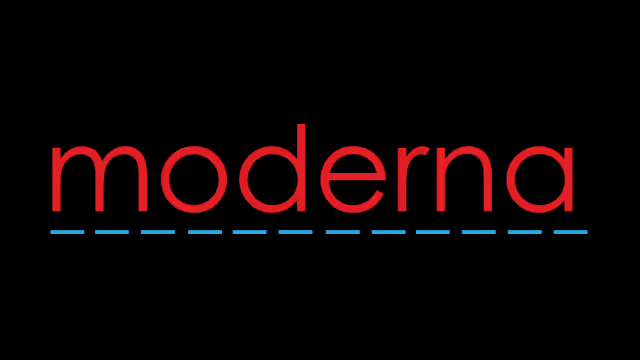Moderna is a biotechnological and pharmaceutical company, specializing in the production and research of mRNA therapeutics.
Moderna might be a young company, but it has quickly become a force to be reckoned with.
With just over a decade-long history, the company produced one of the most well-known Covid-19 vaccinations (mRNA-1273) in 2021 when the entire world came to a standstill.
What’s more, Moderna’s vaccine has a success rate of over 90%, indicating the company’s expertise in medicine and enhanced capabilities to make a significant impact.
Statistics Highlighting Moderna's Success in 2021
- Sales Revenue of $17.7 billion
- Net Income of $12.2 billion
- Stock price of $254.0 on 31st December 2021
- Market Capitalization of $54.2 billion
- More than 3000 employees
- Provides vaccines in more than 70 countries
- Located in 7 countries
Let’s take a deeper look into Moderna’s history to understand how it became one of the largest distributors of Covid-19 vaccinations, as well as a major distributor of other vaccines, despite starting operations only a decade ago.
Moderna Disrupting the Pharmaceutical Industry
In 2015 - only five years after it was founded - Moderna was listed as number one on the CNBC Disruptor 50 List.
This list was a nod to Moderna’s dramatic impact, and its disruption, of the Pharmaceutical market, through its use of mRNAs.
How did the founders of Moderna come up with the idea to use mRNAs in the first place?
The Beginnings of Moderna

It all started with a research paper. Derrick Rossi, who was a professor at Harvard Medical School, came across a paper on mRNAs while he was pursuing his PhD.
This paper, written by Hungarian biochemists Katalin Kariko and Drew Weissman, listed the potential uses and benefits of using mRNAs as a form of treatment.
As opposed to traditional medication, mRNAs equip the body to create its own proteins, to fight certain diseases.
While this was an important discovery, Kariko was unsuccessful in commercializing it. Her attempt at a business in Hungary failed. However, Rossi was inspired by her idea and he modified the mRNAs to achieve their full pharmaceutical potential.
Kenneth Chien, a cardiovascular scientist at Harvard, and Robert Langer, a famed entrepreneur at MIT, soon noticed Rossi’s work.
Recognizing the potential of mRNAs, they joined him as he pitched his start-up idea to Flagship Pioneering, a venture capital firm.
Flagship’s CEO, Noubar Afeyan, saw the promise of mRNA, and thus, the four men became the co-founders of Moderna in 2010.
The name of the company was an amalgamation of the words “modified” and “mRNA”.

Moderna Becomes A Unicorn and Continues to Grow
Moderna started as a private company, yet it had no difficulties in raising financing.
In its first two years, the company continued to prepare its products in secrecy. It conducted preclinical and clinical trials, using non-human primates to establish the usages of mRNA medication.
The 'stealth mode' adopted by the business ensured that any potential competitors would not be alerted to their work.
In 2012, just two years after incorporation, Moderna reached a unicorn status and also raised $40 million in financing from Flagship and other investors.

In 2013, the company’s financial position further strengthened through its collaboration with AstraZeneca.
Moderna received an upfront payment of $240 million from the company, through which they would conduct preclinical and clinical trials of medical candidates chosen by AstraZeneca.
The latter company would choose 40 drug candidates over five years, while Moderna would receive royalties for any drugs sold, and an additional payment of $180 million if they cleared three technical milestones.
Through the collaboration, therefore, Moderna was not just able to secure the finances required to continue their clinical trials, but they also benefited from the expertise of a well-established biotechnological company.
Another major investment in 2013 was that from the Defense Advanced Research Projects Agency.
Moderna was awarded around $25 million to research and develop mRNA therapeutics, to fight against infectious diseases. This reward was given after a rigorous scientific review, therefore, also serving as evidence of Moderna’s scientific integrity.
Moderna made good use of the investment it received. In addition to its headquarters in Cambridge, Massachusetts, it opened a new site in the same city. This site would provide more space for research facilities, as well as administrative operations.
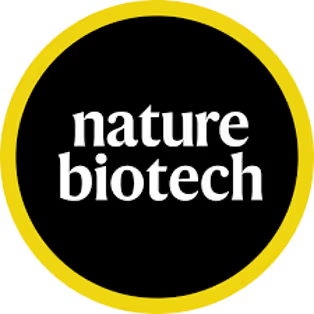
Furthermore, Moderna also made a breakthrough in the academic field, through the publication of its paper in Nature Biotechnology. This peer-reviewed scientific article lent support to the products sold by Moderna, as well as introduced mRNAs into the world of academia. The article reported that the use of mRNAs improved heart function in mice, therefore, opening up the field to countless possibilities.
Due to Moderna's commitment to scientific research and its enthusiasm regarding mRNA therapeutics, the company was able to hire around a dozen veterans in 2013 only.
Among these was Dr. Joseph Bolen, who was the head of oncology research at The Takeda Oncology Company. He became the head of Research and Development in Moderna, offering the company his vast experience and expertise.
It should come as no surprise, therefore, that in the same year, Moderna was named in the fastest-growing "Global Growth Companies" list by the World Economic Forum.
Moderna Engages In Partnerships To Enhance Research
One of Moderna's strategies was to engage in partnerships with other businesses in the industry to expand its research in mRNAs. This allowed the company to share the expertise and experience of the other businesses, while at the same time, securing investment for its research projects.
In 2014, therefore, Moderna partnered with Alexion, a major biopharmaceutical company, to develop mRNAs that could be used to target rare diseases. Alexion made an upfront payment of $100 million.
Furthermore, it also invested in the company worth $25 million. The partnership enabled Alexion to purchase 10 potential candidates to investigate, develop, and commercialize while Moderna was entitled to commercial milestone payments and royalties.
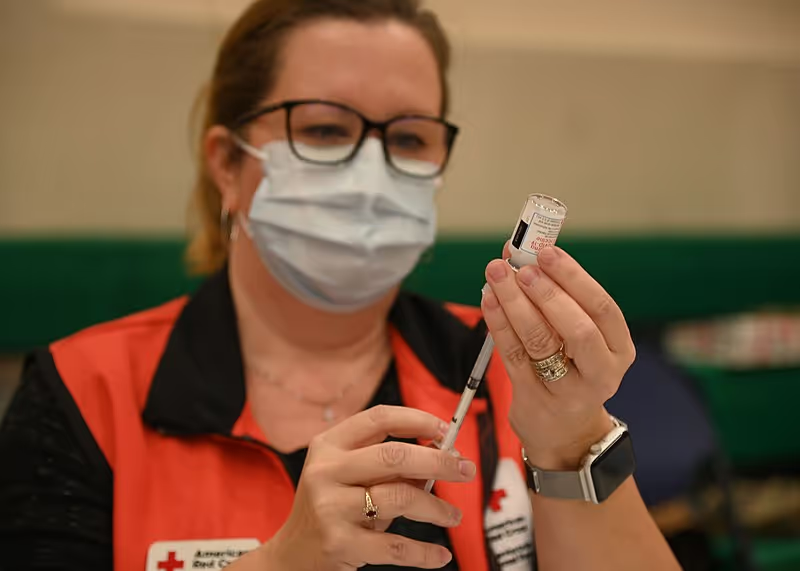
In the same year, Moderna also collaborated with an institute in Sweden, called “Karolinska Institutet”. The purpose of this partnership was to expand its research into a different country, while also benefiting from the experts present at the institute. Therefore, Moderna provided research grants to scientists in the institute. Furthermore, to show its commitment, Moderna also created a new lab next to the university in Sweden.
In 2015, Moderna secured another global partnership, this time in Paris. The Institute of Pasteur was a public benefit organization committed to research, public health, and teaching. Moderna hoped to reap many benefits from the strategic agreement, as it would allow it to build on its research and disseminate the results in Paris as well.
Key Strategic Takeaway #1: Keep Your Eyes Peeled for New Research in Your Field
Rossi was able to build on the mRNA technique of medication because of his awareness of new research in the field of medicine.
At that time, mRNAs weren’t well recognized, nor had they been used on such a large scale, as would later be achieved by Moderna. Yet, Rossi was unflinching in his belief in the new research and was determined to make it work.
His research into mRNAs and his modification of them ultimately led to the birth of Moderna. He was joined by the other three members, all of whom had been well aware of his work. That's to say, one should also be aware of their colleague's work, in case an opportunity may arise!
Ultimately, Rossi wasn’t just able to utilize the research to build his business, but he was also able to ‘disrupt’ the pharmaceutical market, trailblazing his way through the first decade of Moderna’s history.
Moderna’s Competitive Advantage: mRNA
The x-factor and the competitive advantage that Moderna had up its sleeves was mRNAs.
Sure it offered many benefits, but it also came with its own set of unique challenges. After all, it was a new branch of pharmacy and there was general scepticism around its efficacy.
There were also technical challenges involved, such as controlling the number of proteins a single mRNA can make. Since this amount varied, creating treatment options through mRNAs was a huge feat.
Moderna’s Four Ventures
From viral infections to cancer, Moderna remains committed to harnessing the power of mRNAs to find a cure for every possible disease.
To achieve a competitive advantage, Moderna created four ventures, which helped structure and streamline the company.
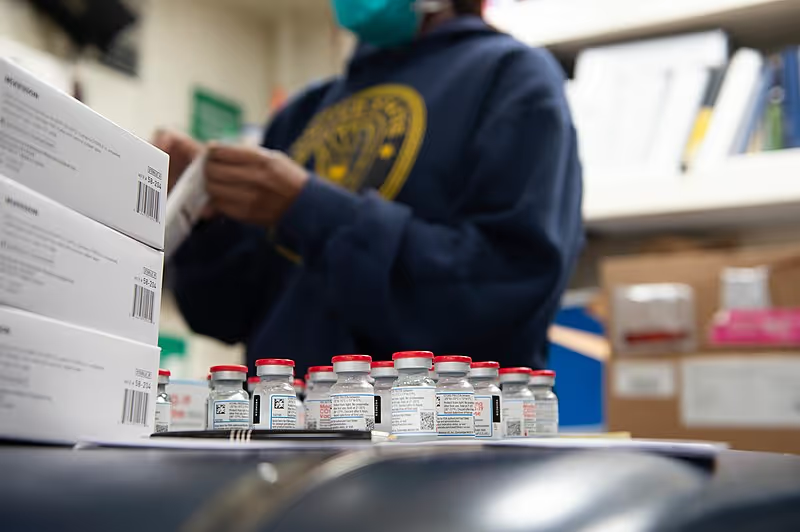
Therefore, before delving into Moderna’s public image, let’s take a look at these four ventures, which would continue to represent the company in its upcoming years.
- The first venture was Onkaida Therapeutics. As the name hints, this venture would focus on mRNA treatments in oncology.
- The second venture was Valera LLC for Infectious diseases. This would tackle the prevention and treatment of viral, bacterial, and parasitic infectious diseases.
- The third was Elpidera. The title for this venture was derived from the Greek word “elpida” which meant “hope”. This venture would thus serve as a ray of light among the small patient population of rare and untreatable diseases.
- The fourth venture was Caperna LLC which would develop personalized cancer vaccines. Each vaccination henceforth developed by this division would tailor each patient’s needs accordingly.
The organization of Moderna in this manner ensured its smooth operations. Organization, after all, leads to efficiency.
How did Moderna Prove mRNA’s success?
One of the biggest challenges for Moderna was to prove that it was conducting a worthwhile business.
Its partnerships and collaborations were one way through which Moderna solidified its position in the industry.
For example, in 2016, Moderna announced a partnership with Pharmaceutical Products Development, LLC. PPD would support Moderna in its strategic planning vis-a-vis the development of its new drug candidates.

In the same year, Modern also announced a partnership with the Bill & Melinda Gates Foundation, through which it would receive the necessary funds to battle HIV. The Valera venture of Moderna would take the lead in this partnership.
Similarly, Moderna’s previous partnerships continued to bear their fruits. Its collaboration with Merck, for example, proved to be quite successful, as the two companies entered the field of personalized cancer vaccines.
The partnership with AstraZeneca was also extended into the field of immuno-oncology mRNA therapeutics. The candidates developed through both partnerships reached Phase 1 of the clinical trials, as they began to be tested on humans rather than animals. Following these trials, Moderna became a clinical-stage company in 2016.
Moderna, as a result, was noticed both by investors and other organizations. For example, the Biomedical Advanced Research and Development Authority awarded funding of $8 million, which could go up to $1245 million, to speed up the development of an mRNA vaccination targeting Zika.
Furthermore, Moderna was recognized for five consecutive years as one of the top employers of the biopharmaceutical industry by Science and Science Careers.
While this was a good way to introduce the potential of mRNA to the market and garner interest in it, one area was still lacking: journal publications.
Following from 2017, under Melissa Moore, the Chief Scientific Officer of Moderna's research platform, the company published a series of journal articles, sealing its place in the scientific world.
Moderna Enhancing Brand Appeal and Visibility Through Publications
A sign of a good business is that its clients and investors understand the advantages and uses of its products and services.
Moderna’s strategy to publish articles following almost every discovery, thus, was an excellent way to equip any interested academics with the knowledge of mRNAs.
There are many examples of such publications scattered throughout Moderna’s history. For example, in 2017, Moderna published results of the Phase-1 clinical trial of the mRNA influenza vaccine in Molecular Therapy.
In the same year, results from the Zika mRNA vaccine trials were published in Cell. Another article in Molecular Therapy soon followed, which explained the complex workings of mRNA prophylactic vaccines.
The same tradition continued in 2018 - an article in Vaccine demonstrated the diverse uses of mRNA therapeutics while another in Nature Medicine suggested mRNA therapeutics for rare metabolic disorders.
The list above is not inclusive of all of Moderna’s publications. However, one can gauge from the cited examples, that Moderna was serious about spreading its research throughout the scientific community.
Moderna’s IPO In 2018 Makes History
Moderna’s initial public offering (IPO) on 31st December 2018 was the largest biotech IPO in history. The company raised a hefty amount of $621 million through the sale of over 27 million shares.
Following its conversion into a public company, Moderna participated in many conferences to communicate its aim, vision, and contribution to biopharmaceutics thus far. For example, in April 2019, Moderna presented at the 18th Annual Needham Healthcare Conference.
Three months later, the company presented at the ROTH RNA Revolution Conference. Previously, Moderna had just attended the J.P. Morgan Healthcare Conference.
The company also held a “Science Day” and a “Research and Development Day” for its investors. These were ways of attracting investments while at the same time ensuring that investors remained well-aware of the aims of the company.
Key Strategic Takeaway #2: Publicize Your Work To Attract Top Talent and New Opportunities
Most of Moderna’s income depended on the mRNA drugs and vaccinations it developed. Since mRNA was an emerging field in pharmacy, it was important to communicate what mRNAs were and how they could be useful.
Moderna’s strategy was to target both the scientific and the entrepreneurial world. The former would give its products credibility and the latter would secure investment for further research.
This strategy is especially applicable if you’re trying out something new. If neither clients nor investors understand what you’re doing, then you can hardly expect anyone to buy your product!
Moderna’s Impeccable Strategy To Combat Covid-19
In 2020, Moderna completed a decade of its existence. In those ten years, the company managed to create a bioplatform that allowed it to suggest a vaccine candidate just two days after the Chinese put out the genetic sequence of Covid-19.
Let’s take a look at Moderna’s effective strategy to counter the deadly Covid-19 pandemic.
Development of the Covid-19 vaccine
While the company faced a loss at the end of 2019, it found the perfect opportunity to compensate for the loss through its development of the Covid-19 vaccination.
Using its mRNA research, the researchers at the company put together a vaccine candidate, after which they conducted study after study to check its efficacy.
In less than two months, Moderna was able to conduct a Phase-1 study on its Covid-19 vaccination called mRNA-1273. In doing so, it became the first biopharmaceutical company to test the newly developed vaccine on humans.
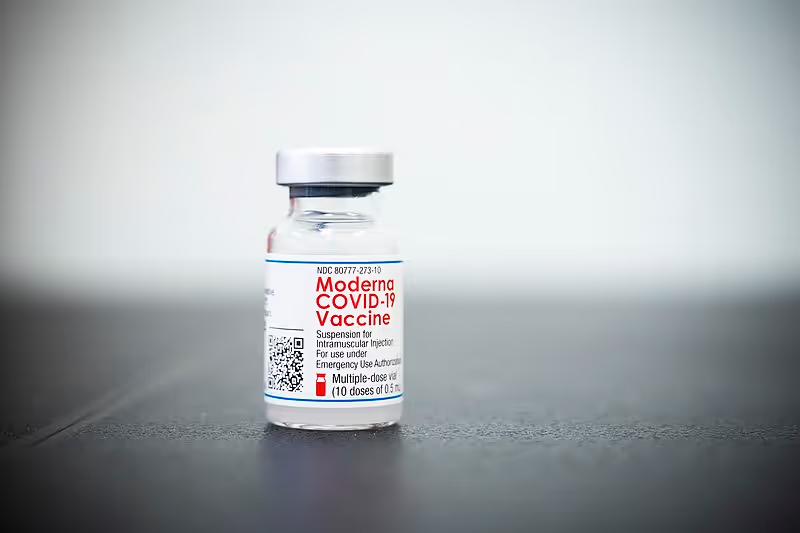
In the next few months, the company conducted the Phase 2 and Phase 3 studies, both of which ultimately yielded positive results. To keep its audience updated, Moderna published the results in The New England Journal of Medicine.
Initial tests of the vaccine were conducted on adults. Later during the year, around December, Moderna also conducted its first trials on adolescents. In the next year, the company extended the trials to children between six and eleven years old.
It was at the end of 2020 that mRNA-1273 was authorized by international governments, as well as the local, such as Canada and Israel.
In under a year, therefore, Moderna didn't just put out a new vaccine candidate but it relentlessly conducted trial after trial to confirm its efficacy and to ultimately distribute it all around the world.
In the next year, Moderna conducted trials for its Covid-19 booster, mRNA-1283. Its development followed a similar trajectory - the studies were conducted smoothly and the distribution of the new booster began in less than a year.
Moderna’s success during the development of the vaccine itself was visible to both the government and international organizations.
In 2020, Moderna received many funds such as that from the USA government amounting to $483 million and another from Defense Advanced Research Projects Agency (DARPA) amounting to $56 million.
Furthermore, the company also took this opportunity to collaborate with many local and international biopharmaceutical companies, therefore, leaving a global footprint in its distribution of the Covid-19 vaccination.
Leaving a Footprint in the International Pharmaceutical Industry
Moderna was committed to the speedy development of the Covid-19 vaccine. Therefore, it signed many agreements with many pharmaceutical companies throughout the world. In its attempt to do so, thus, the company became even more popular throughout the medical industry.
For example, in 2020, Moderna signed a ten-year strategic collaboration agreement with Lonza, which would allow it to manufacture the mRNA-1273 on a large scale. Lonza was a Swiss multinational company, which manufactured goods for pharmaceutical and biotechnological companies.
Being a multinational, Lonza's reach was wide and spanned across countries such as France, USA, and Switzerland. The agreement with Moderna would enable the two companies to invest in manufacturing facilities all over the world. This investment would allow the manufacture of around 1 billion doses for global use.
In the same year, Moderna collaborated with ROVI, which was a pan-European pharmaceutical company engaged in the research, development, and manufacturing of small molecules. The agreement with ROVI allowed the manufacture of the mRNA-1273 in a manufacturing facility in Madrid, Spain.
Similarly, in 2021, the company partnered with Medison Pharma which would commercialize the vaccine across Central Eastern Europe and Israel. In the same way, it also partnered with Magenta to distribute both the vaccine and the booster in UAE.
Apart from the collaborations with organizations in the industry, Moderna also sold its vaccines to many international governments directly. Japan, South Korea, Switzerland, and South Africa are a few of many examples. In total, the company sold the mRNA-1273 - and later, the mRNA-1283 - to more than 70 countries around the world!
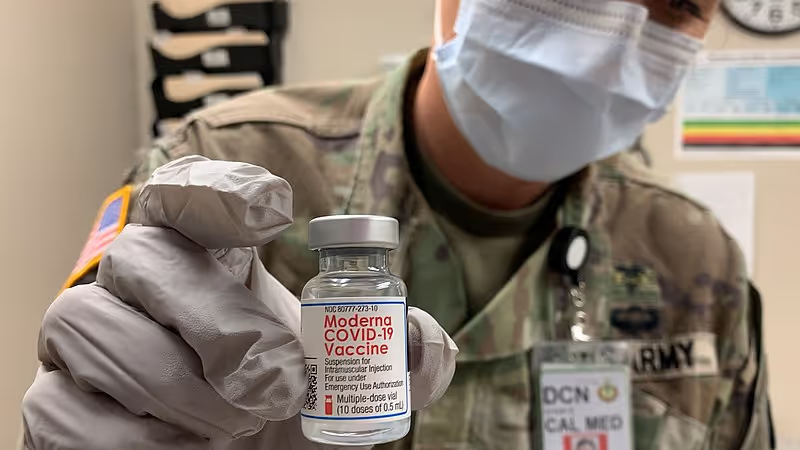
Success and Production of mRNA-1273: A Few Statistics
Moderna's strategy was aligned toward producing as many vaccines as possible for distribution all around the world.
In 2020 alone, the company managed to produce 20 million doses! This is remarkable, considering that it spent most of the year conducting studies to corroborate the vaccine’s efficacy.

In 2021, Moderna distributed around 800 million doses worldwide, and in 2022, the company plans to deliver 3 billion doses of the mRNA-1273.
It is no surprise then that the company made it to the NASDAQ-100 list in 2020. (The NASDAQ-100 is an index that lists the top hundred non-financial companies with the highest market-capitalization values.)
Key Takeaway #3: Commit and Collaborate To Succeed
Moderna suggested an mRNA vaccine candidate just two days after the reveal of the virus's genetic sequence.
The researchers in the company worked tirelessly, and in about a year, they were able to conduct all necessary trials for the vaccination. Moderna was the first company to conduct a human trial for its vaccine, surpassing corporate giants in the industry. And to think it was established a decade ago!
Moderna’s commitment to mRNAs and its constant research into them paid off.
The company, however, did not stop at the development of the vaccine. It understood the nature of the emergency. Thus, it collaborated with companies and governments - both local and international - to ensure quick production and distribution of the vaccine.
Collaborations with Catalent, for example, allowed speedier manufacture of the vaccine locally. On the other hand, the company’s partnership with Lonza allowed it to ensure quicker production of mRNA-1273 globally.
A good company, thus, does not operate alone, especially during a global emergency. It understands the need to collaborate and to spread its roots far away from its motherland.
Moderna’s Growth During the Pandemic & its Digital Transformation
While the pandemic demanded most of Moderna’s attention in the years 2020-2021, the company did not forget its obligation to other ongoing research.
Not only did it make progress with other vaccinations, but it also increased its pipeline by developing more possible candidates for various diseases.
Outside the Covid-19 vaccine: Progress in Other Research fronts
One of the most successful vaccines in this period was the cytomegalovirus (CMV). This vaccine entered its Phase 2 study in 2020 and 2021, it entered Phase 3 trials. The vaccine is now on the road for authorization.
Similarly, another vaccine developed by Moderna in this period was for the Crigler-Najjar Syndrome Type 1 (CN-1). This disease was ultra-rare, being found in only 70-100 people worldwide.
In 2021, Moderna suggested a possible mRNA vaccine candidate for the disease, collaborating with the Institute for Life-Changing Medicines, to help battle the illness. Thus, the company's commitment to research in rare diseases shined through the development of this vaccine.
Furthermore, the company was encouraged by positive data from the vaccine for the chikungunya virus. Its confidence was further increased by the success of six candidates for infectious diseases in their Phase 1 studies. Thus, Moderna decided to expand its reach further into more autoimmune and inflammatory diseases.
On the side, Moderna was also exploring gene editing options. It established two new collaborations from 2020 to 2021 to aid it in this endeavor. The first was with Vertex, which would allow both companies to treat Cystic Fibrosis through gene editing.
The other was with Metagenomic Inc. which was an expert in genetics. This would allow the company to benefit from Metagenomic's gene-editing tools.
Moderna’s influenza vaccine was also slowly gaining success as the vaccine entered Phase 1 trials in September 2021. The company took it one step ahead by combining the influenza vaccine with the Covid-19 booster, thus killing two birds with one stone.
Moderna Expands To Become a Leader In The Healthcare Industry
Moderna had gained much traction due to its Covid-19 vaccine. Almost every country now knew the name of the biopharmaceutical company that had developed a vaccine in just under a year. This allowed Moderna to take part in even more collaborations both locally and internationally, while at the same time, expanding its reach in different cities and countries around the world.
In 2020, Switzerland became the first country outside North America to host a Moderna regional hub and commercial organization.
In 2021, Moderna announced plans to establish an international business services hub in Poland. The company had already built six such centers all over Europe, which were a huge success. This would add one more country to Moderna’s portfolio.
Similarly, the company announced plans to build mRNA facilities in both Canada and Australia. This was largely a result of the pandemic; the new manufacturing facilities would allow easier access to Moderna's vaccination. However, it would also allow Moderna to commercialize its other vaccines in the two countries.
As Moderna expanded, it also acknowledged its impact on the health sector. It recognized that the need for health was universal and thus, should not be limited to those with money. Therefore, it established the Moderna Charitable Foundation in 2021, spurred by the Covid-19 vaccine.
This foundation would allow the delivery of vaccinations to underprivileged populations. The initial endowment by Moderna was around $50 million!
Top Pharma Employer: How Moderna Attracts and Retains Talent
Moderna had been recognized before for being one of the top employers in the pharmaceutical market. In 2022, it was ranked as the number one employer in BioSpace’s “Best Places to Work” list.
What made the company such a good employer?
The company’s focus on research and development was one reason why Moderna was such a popular employer. It provided opportunities for innovation for researchers in the field.
Furthermore, it also ensured that its employees remained updated on all new technologies and discoveries, thus allowing them to expand their body of knowledge.
In an attempt to do that, Moderna, therefore, established the Artificial Intelligence Academy in collaboration with Carnegie Mellon University (CMU). This, in itself, was an innovative step, as it allowed Moderna employees to immerse themselves in a learning experience, while also continuing their job and learning from it directly.
It shouldn’t come as a surprise, then, that it was named in the “World’s Most Innovative Companies for 2021” list created by Fast Company.
Moderna Embraces Digital Transformation
mRNAs have software-like features and inherent replicability which makes digitization inevitable. Since Moderna specialized in mRNA technology, it understood the need to incorporate digital tools into its research.
Digitization would allow the company to improve the quality of its vaccines, as well as lower their cost. What’s more, Moderna would also be able to increase its scalability, therefore, allowing quicker development and production of different mRNA vaccinations.
Here are a few examples of the kind of applications and software Moderna innovated as part of its digitization strategy:
- To aid in experimentation, Moderna created a proprietary platform software that allows it to create structured experiments.
- Moderna also created a Regulatory app that tracked the authorization of mRNA vaccines.
- Similarly, the Toxicology app was developed to keep track of important milestones to be met before moving onto the clinical stage.
Moderna’s digitization enabled quicker development of vaccines, which was part of the reason why it rapidly expanded its product pipeline in such a short period of time.
Furthermore, its digitization gave it an edge over older pharma giants, as it was able to begin the digital process from the get-go.
Key Takeaway #4: Keep Setting The Bar Higher
Moderna didn’t halt during or after its success at the Covid-19 vaccination.
With a clear focus on its original aims, the company continued to conduct studies on existing vaccine candidates and expanded its pipeline.
Furthermore, taking advantage of its success, Moderna signed agreements with international governments such as those of Canada and Australia, to build its manufacturing facilities in their respective countries. This allowed not just the sale of Covid-19 vaccines but also allowed future sales of other mRNA vaccines.
Thus, while it is important to expend your utmost effort during global emergencies, it is also important not to be blinded to your other aims!
Moderna Today & Key Strategic Takeaways
Moderna’s short journey so far has proved to be quite fruitful. Due to its commitment to research in mRNAs, Moderna flourished in the biotechnological industry and became a leading pharmaceutical name all over the world.
Let’s take a look at Moderna’s mission and values that fueled the company’s growth and helped it make a lasting impact during difficult times.
Moderna’s Mission
Moderna aims to use mRNA science to usher in a new era in the world of pharma, providing quality and innovative medicinal solutions.
The company states its mission as: “To deliver on the promise of mRNA science to create a new generation of transformative medicines for patients.”
Moderna’s Values
Moderna is guided by its core values of:
- Bold
- Collaborative
- Relentless
- Curious
The company is firmly committed to making the world a better place. Not only by providing in-demand medicines to patients but also by empowering employees, and doing right by the communities as well as the planet.
Moderna’s Growth by Numbers
Strategies To Learn From Moderna’s Journey
Moderna’s growth journey offers various lessons and maxims for organizations and individuals alike.
Some of the key strategic takeaways are as follows:
1. Seize the Opportunity
Moderna began because its co-founder Derrick Rossi read a paper on mRNAs. He recognized their potential in the pharmaceutical industry and without any qualms, began working tirelessly on developing them for medical use.
In other words, he took the risk once he saw the opportunity. Instead of stepping away from this ‘new’ way of treating diseases, he took a leap of faith and began Moderna’s journey through his work.
Similarly, the company found itself in deep waters at the end of 2019. The shift from a private to a public organization wasn't easy and Moderna was incurring losses. However, with the start of the pandemic, Moderna's researchers immediately set to work, recognizing the opportunity.
2. Know When to Publicize your Work
For the first two years, Moderna worked in secret. This was because it was still in the process of developing a system to work on mRNAs. However, it was also because Moderna wanted to be the first to take advantage of mRNAs.
Later, Moderna realized the need to communicate its aim to the scientific and entrepreneurial community. As a result, it published research related to mRNAs in academic journals and took part in many conferences over the years.
It even delivered a lecture series at MIT about mRNAs, keeping the future generation of scientists and engineers in touch with the new way of developing vaccinations.
Informing people about its operations allowed Moderna to secure the people’s confidence. It also allowed for collaborations that would follow in the later years.
Similarly, due to its openness about its research, the company was also able to attract employees and often made it to ‘best employer’ lists throughout its history.
3. Join Hands with Other Organizations
Moderna’s successful distribution of the Covid-19 vaccine was only possible because it collaborated with many local and international organizations.
For example, Moderna’s partnership with Catalent allowed for quicker manufacturing of the mRNA-1273. Similarly, its collaboration with ROVI allowed it to expand its vaccine market to different areas of Europe.
Moderna could have directly sold the Covid-19 vaccines to international governments. While it did do that, it also created an international network, which would allow it to market and sell future products globally.
The company, therefore, took the opportunity and prolonged its benefits through its creation of an international network.
4. Don’t Get Distracted
A global emergency is a huge deal, but at the same time, it is also important to remember your original projects as well.
Moderna directed a lot of effort toward the pandemic. However, it also ensured that its ongoing research went ahead simultaneously.
These ongoing projects catered toward people with rare diseases. While Moderna gathered many profits from its sale of the Covid-19 vaccination, its vision remained intact. It did not abandon the small percentage of people suffering from unusual diseases for the sake of profit.
Moderna’s strategy of continuing with other projects also made it a trustworthy company. The people knew that come what may, the company would remain committed to whatever it sets its eye on.
Over the course of just eleven years, Moderna has carved out a place for itself in the pharmaceutical industry. Through its commitment to mRNA science and its heavy focus on research and development, the company has managed to expand locally and globally, while contributing greatly to the body of pharmaceutical knowledge in both the academic and the corporate world. Plus, it saved numerous lives by producing a revolutionary vaccine to counter the Covid-19 pandemic. While the company has indeed performed exceptionally, the best is yet to come as it continues to research and find cures for diseases ranging from HIV to cancer.


